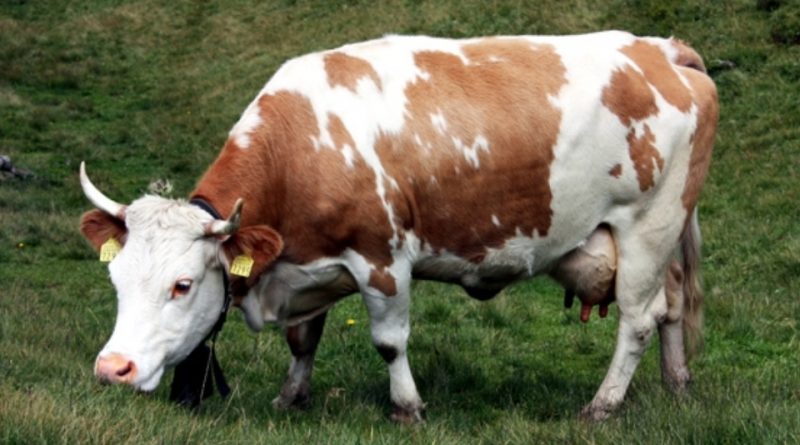Hinterwälder
Hinterwälder
The Hinterwälder is a bovine breed (Bos taurus Linnaeus, 1758) native to the Black Forest region in southwestern Germany, with a dual aptitude for meat and milk production.
Systematics –
From a systematic point of view, it belongs to the Eukaryota Domain, Animalia Kingdom, Subgenus Eumetazoa, Superphylum Deuterostomia, Phylum Chordata, Subphylum Vertebrata, Infraphylum Gnathostomata, Superclass Tetrapoda, Class Mammalia, Subclass Theria, Infraclasse Eutheria, Superorder, Laurasiatheria, Clade Ungulata, Order Artiodactyla, Suborder Ruminantia, Infraorder Sheep, Family Bovidae, Subfamily Bovinae and then to the Genus Bos, to the Taurus Species and to the Hinterwälder.
Geographical and area distribution –
The Hinterwälder (also known as Hinterwälder-Rind) is a cattle breed bred in some areas of the Black Forest and in Switzerland. It is one of the 11 breeds that adhere to the European Federation of Breeds of the Alpine System (Abondance-France; Grigio Alpina-Italy; Herens-Switzerland; Hinterwälder-Germany; Pinzgauer-Austria; Rendena-Italy; Tarentaise-France; Tiroler Grauvieh-Austria; Valdostana-Italy, Vordelwälder-Germany, Vosgienne-France).
Origins and History –
The Hinterwälder is a breed originating from the South-West of Germany. It is a very ancient breed and its origin should be linked to the ancient Celtic cattle. In the southern Black Forest, area of origin, it is still preserved and bred. This breed has adapted over time to the environmental conditions of this area.
The Hinterwälder was declared in 1992 by the Society for the conservation of domestic animal breeds, as an endangered breed.
To recover this breed, the federal state of Baden-Württemberg pays special premiums.
The Dortmund Zoo hosts a small population of this breed, as does the Stuttgart Wilhelma (Zoo). This breed is also defended in Switzerland, so today, at present, we are witnessing a small renaissance of the breedings of this breed.
Morphology –
The animals of the Hinterwälder breed are small and have a hock height of 115 to 125 cm with a weight of 380 to 480 kg. The head, as well as the limbs are usually white and red ears; the rest of the pale yellow or dark red brown coat on a white, stained background.
The mucous membranes are depigmented and pink in color.
The horns are clear.
Production aptitude –
The Hinterwälder is a dual-purpose breed for milk and meat production.
The milk yield (3500 kg of milk with 4% fat and 3.5% protein) correlated to the reduced body weight (about 420 kg) and the small size is to be considered very considerable. The percentage of milk produced as a yield on the basic feed is high and thanks to its percentage of food conversion even if the cattle is taken to extensive grazing. They are also animals of good fertility and very long-lived (the most long-lived breed in Germany), a characteristic that translates into good performances and general yields.
In some farms the cows produce up to 5000 kg (30%), and therefore above the national average.
The cows also demonstrate good aptitudes as mothers and the calves have a strong weight increase with increases of 900-1000 g / day. Thanks to their low weight and their excellent feed conversion, this breed is suitable for grazing in the most difficult soils and in extensive farms.
The breed is in fact characterized by great rusticity, longevity, fertility and aptitude for grazing, thanks also to the strong hooves and very strong limbs, suitable for inaccessible areas where it is grazed.
Guido Bissanti
Authorities-
– Wikipedia, the free encyclopedia.
– Roberto Parigi Bini, 1983. Cattle breeds, Pàtron editore, Bologna.
– Daniele Bigi, Alessio Zanon, 2010. Atlas of native breeds. Cattle, horses, sheep and goats, pigs bred in Italy, Edagricole-New Business Media, Bologna.

